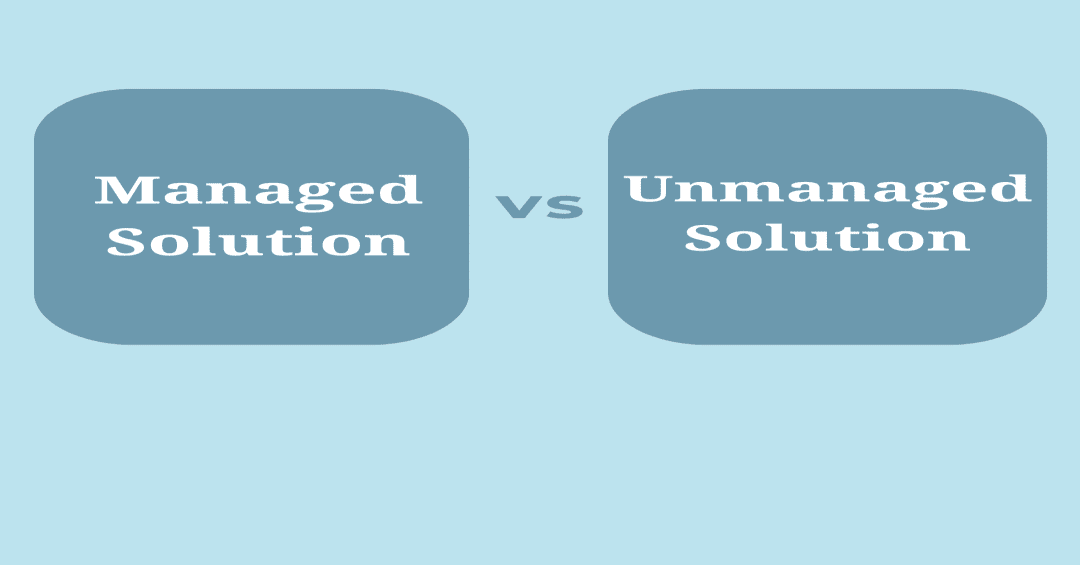
Introduction
Power Platform customization, especially through Power Apps, is key to tailoring applications to fit unique business needs without heavy coding. Two crucial concepts to understand are managed and unmanaged solutions. While managed solutions provide control and are valuable in production environments, unmanaged solutions offer flexibility during the development phase. This summary explores these two solutions in Power Apps, detailing their differences, benefits, and when to use each towards successful Power Platform customization.
Key Differences Between Managed and Unmanaged Solutions
Power Apps, as part of the broader Microsoft Power Platform, offers a comprehensive suite of tools designed to help organizations create custom applications without the need for extensive coding.
Key Difference
Customization Levels
Security and Control
Deployment and Versioning
Managed Solution
- Managed solutions ensure app stability by limiting unauthorized changes, ideal for secure deployment across various organizations.
- Managed solutions heighten security by restricting user modifications and standardizing customization rules.
- Managed solutions simplify app deployment, maintenance, and updating, creating a more stable app environment.
Unmanaged Solution
- Unmanaged solutions are great for development and testing due to their adaptable nature for testing various apps.
- While unmanaged solutions simplify app customization, careful supervision is crucial to avoid security or performance issues.
- While unmanaged solutions expedite development, their flexibility can make version control tricky and require careful change tracking.
Case Studies: Managed vs. Unmanaged Solutions
Understanding the practical differences between managed and unmanaged solutions in Power Apps can significantly impact the efficiency and flexibility of application development within the Power Platform.
Case Study 1: Implementation of Managed Solution
- The managed solution simplified updates, ensuring consistency across departments through centralized control.
- IT admins could push updates untroubled by breakage of department-specific customizations.
- Managed solutions ensure application integrity by prohibiting direct component editing, thus avoiding unauthorized changes.
- The ease of deploying updates saved the IT department significant time and resources.
Case Study 2: Implementation of Unmanaged Solution
- The unmanaged solution allowed their developers to experiment freely with customizations, without restrictions.
- It facilitated quick adjustments and iterations, which was crucial for staying relevant in a competitive market.
- Developers were able to learn from each deployment and immediately implement changes for continuous improvement.
- This method required a solid code management plan to avoid conflicts and ensure app stability.
Conclusion
In closing, the decision between managed and unmanaged solutions in Power Apps hinges on your organization's specific needs around customization and control within the Power Platform. Managed solutions offer a secure and controlled environment, ideal for final deployment scenarios where changes should be minimal. On the other hand, unmanaged solutions provide the flexibility needed during the development and testing phases, allowing for iterative customization and fine-tuning.
- Managed solutions are best suited for situations where an application is complete and ready for distribution across various environments or when dealing with third-party solutions where direct modifications are to be avoided.
- Unmanaged solutions are preferable for ongoing projects that require frequent updates or when there's a need for in-depth customization that might evolve over time.
Understanding the distinctions between these two solution types is crucial for effective customization and application lifecycle management within the Power Platform. By carefully considering your project's current phase and future needs, you can choose the solution type that aligns best with your goals, ensuring a smooth and efficient adaptation to the evolving business requirements.
FAQs
Managed and unmanaged solutions in Power Apps handle conflicts during customization differently. Managed solutions offer centralized control and restrict unauthorized changes, minimizing conflicts between multiple developers. On the other hand, unmanaged solutions allow for more flexibility but require careful supervision to avoid conflicts, especially when multiple developers are working on the same components simultaneously. Developers need to implement solid code management plans to address conflicts effectively and ensure app stability.
Integrating managed or unmanaged solutions with other components of the Power Platform, such as Power Automate or Power BI, may have certain limitations or considerations. While both types of solutions can be integrated with other Power Platform components, developers need to ensure compatibility and consider how changes made in one component may affect others. Additionally, security and data governance considerations should be taken into account when integrating solutions across the Power Platform ecosystem.
Managed and unmanaged solutions can be used interchangeably in a single Power Apps project, but it’s essential to understand the implications of each approach and choose the most appropriate solution based on project requirements. While it’s possible to switch between managed and unmanaged solutions during the development lifecycle, doing so may introduce complexities, especially regarding version control and deployment. Therefore, it’s generally recommended to choose one approach from the outset and stick with it throughout the project to maintain consistency and streamline development processes.

